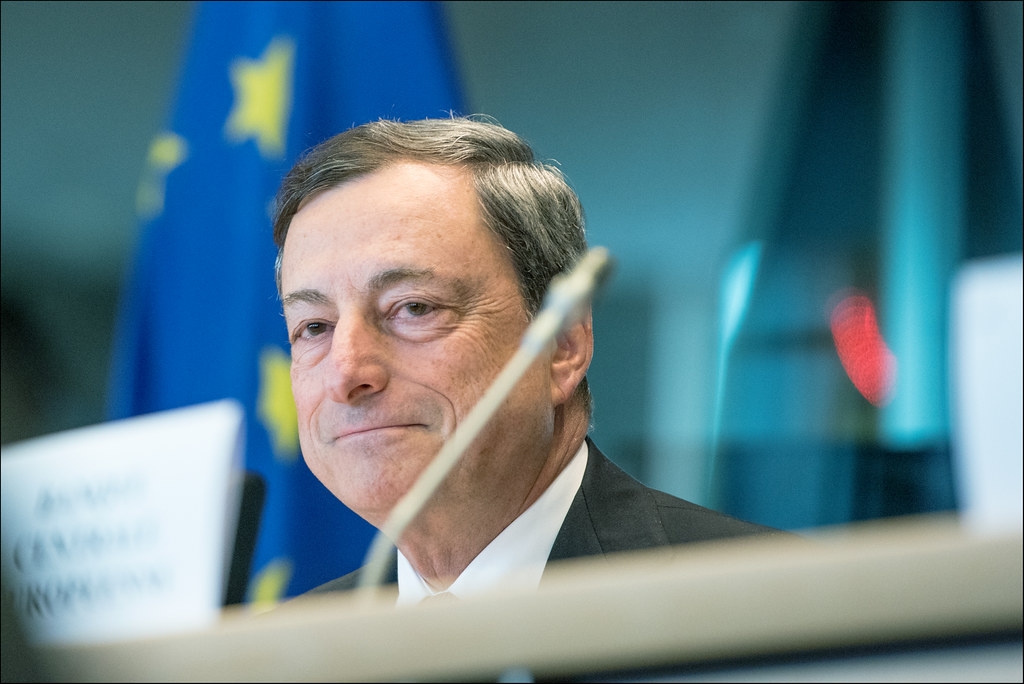Is a Draghi-style Europe feasible?

How much to spend, and how to finance the spending, to save Europe. Theanalysis of the economist Gustavo Piga after Draghi's words
The only personality capable of engaging the institutions of the continent to look at the future of the European Union starting from the fact of its incredible under-performance in the last fifteen years when compared to that of the United States, while at the same time trying to stimulate greater awareness in our leaders with respect to the gigantic challenges that the planet must face, seems to be Mario Draghi .
WHAT DRAGHI SAID
“The gap is everywhere: in productivity, in GDP growth, in GDP per capita,” the former Prime Minister recently stated. A gap that "is widening especially after 2010", due to "an investment gap of 500 billion euros". The data in fact show how this gap compared to the USA, precisely since the beginning of the last decade, has been concentrated to a large extent in public investments, making the almost sole cause of this disparity emerge without fear of contradiction: in fact, since the beginning of the second decade of the century that the EU has recklessly decided to move away from the fiscal policy paradigm useful for emerging, as history teaches us, from extraordinary financial crises such as that of 2008.
The introduction of the Fiscal Compact in 2011, a unique experiment (both looking at the past and current history of all the nations of the rest of the world) in fiscal policy, has not only prevented up to the present day (even when the PNRR became operational !) to use public investment as a lever to quickly lift us out of the crisis that began to grip us in 2009, but also to give employment and dignity to the less well-off and less educated through employment on the construction sites that would open, to relaunch the productivity of our businesses, and finally also, with its intertemporal perspective of three-year austerity plans, to allow a vigorous recovery of pervasive optimism and for private investments to restart, as has happened in the USA.
TWO QUESTIONS FOR EUROPE
Draghi's words now inevitably present Europe with two questions of extraordinary importance: are we ready to reverse the trend with a finally truly expansionary European fiscal policy? And if so, how to do it?
Unfortunately, the answer to the first question seems to be a resounding "no". In fact, the recent reactions of the French, German and Italian governments faced with a worsening of their cyclical situation, with a lower than expected GDP for 2024, has been emblematic: not so much that of wanting to stabilize GDP at its initially expected level through an expansionary fiscal policy, but rather to stabilize the public deficit put in difficulty by lower growth, through greater austerity (and therefore subsequent even lower growth!). A reaction that does not surprise those who have seen in the new agreement on the Stability Pact a tragic confirmation of decades of austerity, and which objectively makes a total paradigm shift as Draghi would like complex.
In any case, even if the European Council were to be convinced of the validity of an expansionary strategy, we would also have to ask ourselves how to finance such massive public investments. There are obviously two paths: one with a debt issued at European level (and public spending inevitably increasingly decided in Brussels), the other with a debt issued in each individual member state (and public spending more decided at European level). national). Draghi prefers the first solution, also to give an acceleration to his favorite and shareable project of the United States of Europe. This, however, presupposes a willingness on the part of individual member states not only, as mentioned before, to finally become expansive, but also to give up a significant piece of fiscal sovereignty, an operation which seems particularly difficult at least in the two most economically important countries, France and Germany, and which could also give rise to a generalized growth of anti-European populism if a top-down policy did not take individual local needs into account and instead preferred a standardized approach. After all, the always cited model of the US centralization of fiscal policy was not realized until 130 years after the start of the union of the American states, i.e. only when the specificities and cultures of the individual states, finally fused, left the I move on to Roosevelt's New Deal.
THE ALTERNATIVE
The alternative would be to ask each individual member state to work independently, with greater national deficits, to finance the required public investments, for a total sum identical to that which Draghi imagines to be raised in Europe. The advantage of this move, following a common agreement between member states, would be to keep anti-European nationalism and populism at bay, a significant effect.
However, it would require Italy, above all, to work much more intensely to learn how to spend well, with a spending review also aimed at mitigating the fears of the "Europe of the frugal": this is a very complex task, in light of the delays we have had in set the PNRR in motion and the lack of interest in investing in the quality of Public Administration personnel. Yet there would remain a second path that could finally set our continent towards a trajectory of progress and growth, laying the foundations for a future federal union.
(taken from Gustavo Piga's blog )
This is a machine translation from Italian language of a post published on Start Magazine at the URL https://www.startmag.it/economia/salvare-europa-pensiero-draghi/ on Sat, 09 Mar 2024 06:31:42 +0000.
